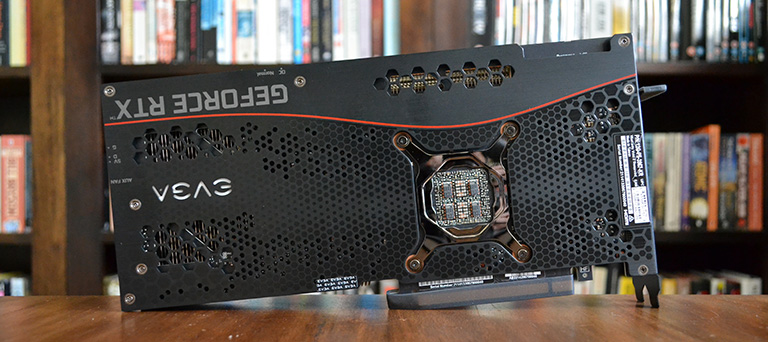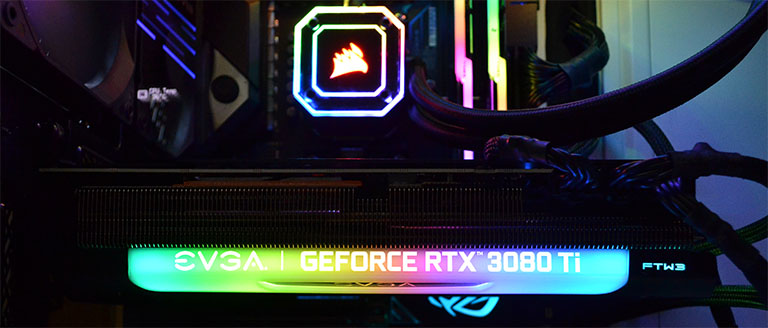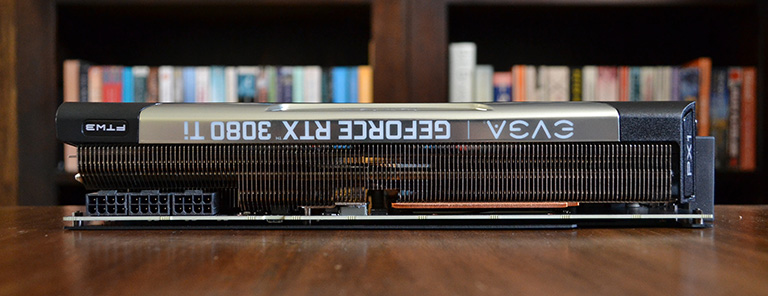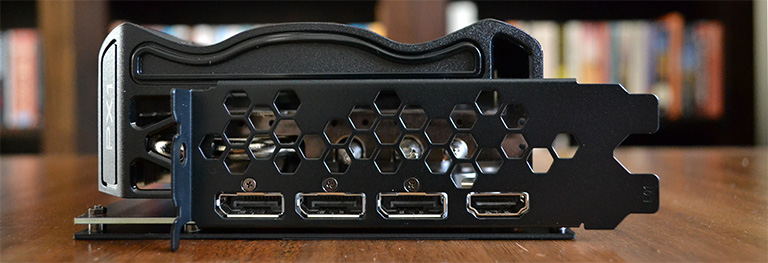Introduction
Issues affecting supply of high-end PC hardware continue to plague the industry as we move into Q4 2021. There's some light at the end of a long tunnel as stock of graphics cards has become less strained in recent weeks.
Those wanting to buy, say, a GeForce RTX 3080 Ti can do so from multiple retailers, though do understand that prices remain comfortably above supposed RRP in many cases. It's to this backdrop that EVGA sent us the RTX 3080 Ti FTW3 Ultra Gaming in for review.
This here beast is supposed to retail for around £1,250, give or take, but the truth is obtaining one will still cost north of £1,500. Not quite RTX 3090 money, of course, yet still close to 30 per cent over RRP.
FTW3 is one of six RTX 3080 Tis in the arsenal. Four are watercooled, intimating EVGA's intentions on cards pulling 350W+, though don't let that fool you into thinking the air cooler present here is not up to the task.
EVGA goes down the well-trodden bigger-is-better route. New for the RTX 30-series, EVGA plants a 2.75-slot juggernaut on top of a 300mm PCB. Standing at 137mm and weighing 1,590g, build quality is excellent, so much so there's no sagging when properly screwed into the chassis.
All of EVGA's technologies are present and accounted for. There are multiple sensors dotted across the PCB and reported in the Precision X1 utility via iCX3 cooling, the metal backplate is robust and in contact with the rear through thermal pads, there are multiple PCB cutouts enabling air to pass through the board, and the heatsink uses a massive copper baseplate from which shoot out six 8mm heatpipes.
The middle of three fans is situated 10mm lower down to make way for the expansive RGB light bar that dominates the top section. The company says this also has the effect of increasing airflow by 16 per cent. The RGB, meanwhile, is amongst the largest we've seen and done well, with no obvious localised hotspots. Gradients are smooth, the lighting adequately bright, and RGB is extended to the FTW3 logo to the side and EVGA branding on the back.
FTW3 also features an additional RGB header on the PCB for easy synchronisation via motherboard software, while a 4-pin fan header can further control cooling.
Plumbed with a 350W TGP in out-the-box state, though rising to 400W dynamically, EVGA clocks this in at 1,800MHz boost, which is considered the top-end of RTX 3080 Ti frequencies. The card runs faster, actually, at a sustained 1,905MHz, though as usual memory is left at default speeds. Manually overclocking brings with it a 13 per cent Power Target increase and a 450W hard limit.
Peering closely on the rear shows a BIOS switch toggling between 'Normal' and 'OC'. The latter's differences are minor. We noted the fans remain on at all times - they switch off in Normal mode below 55°C- and run faster at full chat: 2,000rpm vs. 1,700rpm. EVGA adds no extra TGP into the mix so performance doesn't alter: the card keeps to that 1,905MHz boost. If it were us, the card would be in Normal mode the whole time.
350W doesn't need three 8-pin connectors. The trio's presence is EVGA saying the cooler is capable of handling more watts, should you wish to turn up the OC wick and extract that 450W out of it.
Reinforcing the size of the card, the standard-sized I/O bracket looks small. No surprises here as it carries three DisplayPort 1.4a and a single HDMI 2.1.
Backed by a three-year warranty, a lack of stock is the most obvious hurdle into obtaining what appears to be a fine RTX 3080 Ti. Let's now run the benchmarks and see what's what.














